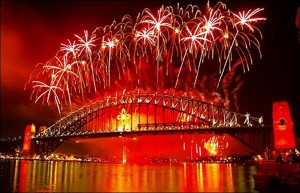Out with the old and in with the new as they say! With the New Year upon us, here’s a look at some of the customs surrounding the last day of the year.
The Times Square New Year’s Eve ball drop is a popular event that has been happening annually in New York City ever since 1907. The ball begins its descend down a specially designed flagpole in 60 seconds at 11:59 pm as people join their voices to count down. The ball can display more than 16 million vibrant colors and billions of patterns, creating a spectacular light show on top of the One Times Square skyscraper.
“Auld Lang Syne,” which means “times gone by” is a traditional standby that is sung at midnight on New Year’s Eve. It was written by Scottish poet Robert Burns in 1788 and is based on a folk song.
In some cities of Colombia, Cuba and Puerto Rico, there is a tradition of making a male doll that is stuffed with memories from the past year, all dressed with the clothes of the outgoing year and is called Mr. Old Year. At midnight, the doll is set on fire symbolizing erasing of the bad memories.
 Las Vegas, Nevada, Rio de Janeiro in Brazil and New York City are among the top places to celebrate New Year’s Eve. One of the biggest light shows to call in the New Year takes place in Sydney, Australia, where more than 80,000 fireworks are set off from Sydney Harbor Bridge.
Las Vegas, Nevada, Rio de Janeiro in Brazil and New York City are among the top places to celebrate New Year’s Eve. One of the biggest light shows to call in the New Year takes place in Sydney, Australia, where more than 80,000 fireworks are set off from Sydney Harbor Bridge.
Mexicans are known to eat 12 grapes on New Year’s Eve. They pop one each at the stroke of midnight, which symbolizes the nature of the months ahead. One needs to watch out in the month the grape tastes bitter! Pomegranates are eaten for prosperity while figs are for fertility.
In many South American countries, people are known to eat cabbage, collards, kale and chard on New Year’s Eve. It is believed that since the green veggies look like money, eating them will bring economic success in the coming year.
In Japan, there is a Buddhist tradition of ringing the temple bell 108 times on New Year’s Eve. It signifies the number of evil desires we suffer from on Earth and the ringing of the bell symbolizes expelling of those sins from the past year. Many temples conduct this ceremony and Watch-Night Bell in Tokyo is one of the popular gathering spots.
In the annual Hogmany celebrations of Scotland, men swing blazing fireballs over their heads as they parade through the streets. The age old tradition is believed to bring a pure and sun-filled year.
According to “Entertaining from Ancient Rome to the Super Bowl: An Encyclopedia,” the first person you encounter in the New Year could set the tone for the whole year ahead. “Kiss someone at the stroke of midnight on New Year’s Eve and you will have a year of luck in love,” writes Joanne Wannan in her book “Kisstory: A Sweet and Sexy Look at the History of Kissing.”
Noisemaking and fireworks have been an integral part of New Year’s Eve celebrations since ancient times as it’s believed they dispel evil spirits and bring good luck.
Greeks in 600 B.C. began following a tradition of using a baby to signify the upcoming year. In order to celebrate their god of wine, Dionysus, people paraded a baby in a basket, representing annual rebirth of that god as the spirit of fertility.